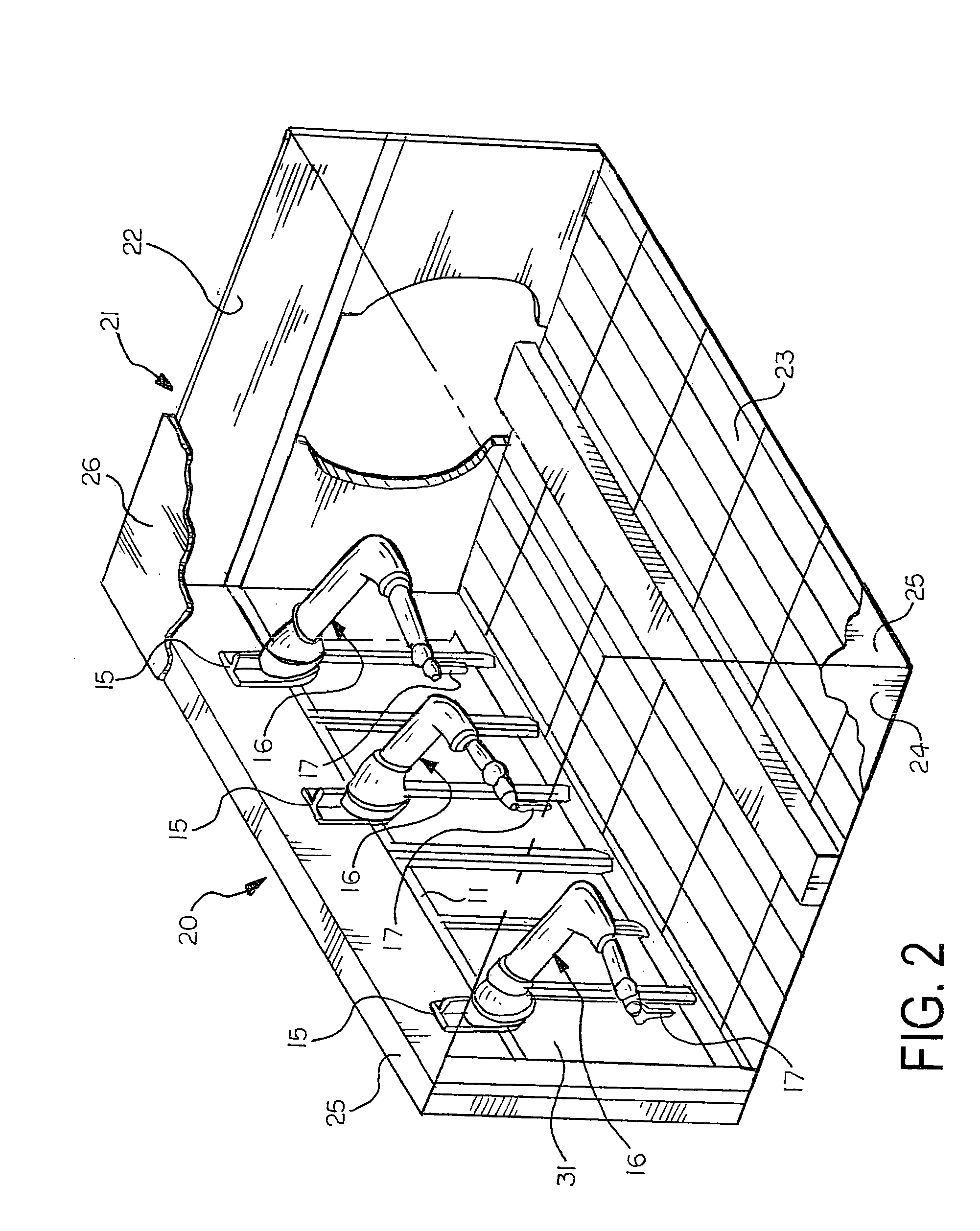Robotic apparatus for painting
a robot and painting technology, applied in the direction of manipulators, electrostatic spraying apparatuses, coatings, etc., can solve the problems of inefficient use of allotted painting cycle time, lack of flexibility to provide optimized standoff, and good portion of available cycle time being unused, so as to achieve cost-effective effect and effectively utilize environmental benefits
- Summary
- Abstract
- Description
- Claims
- Application Information
AI Technical Summary
Benefits of technology
Problems solved by technology
Method used
Image
Examples
Embodiment Construction
[0035]There is shown in FIG. 1 a modular elevated rail apparatus 10 for painting articles or objects in accordance with the present invention. The elevated rail apparatus 10 is adapted to be disposed in a paint booth as discussed below. The apparatus 10 includes a pair of frame rails 11 extending in a horizontal direction and spaced apart a predetermined distance on opposite sides of an axis 12 defining a path of travel for objects to be painted. Each end of each of the frame rails 11 is supported on an upper end of an associated one of a plurality of legs 13 adapted to engage a floor of the painting booth. Corresponding ends of the frame rails 11 can be connected by cross support members 14 that cooperate with the frame rails 11 and the legs 13 to form a modular, rigid supporting frame structure of the apparatus 10. If required for support, additional ones of the legs 13 and the members 14 can be attached intermediate the ends of the frame rails 11.
[0036]The frame rails 11 each hav...
PUM
| Property | Measurement | Unit |
|---|---|---|
| non-conductive | aaaaa | aaaaa |
| electrically insulating | aaaaa | aaaaa |
| color changer | aaaaa | aaaaa |
Abstract
Description
Claims
Application Information
 Login to View More
Login to View More - R&D
- Intellectual Property
- Life Sciences
- Materials
- Tech Scout
- Unparalleled Data Quality
- Higher Quality Content
- 60% Fewer Hallucinations
Browse by: Latest US Patents, China's latest patents, Technical Efficacy Thesaurus, Application Domain, Technology Topic, Popular Technical Reports.
© 2025 PatSnap. All rights reserved.Legal|Privacy policy|Modern Slavery Act Transparency Statement|Sitemap|About US| Contact US: help@patsnap.com



